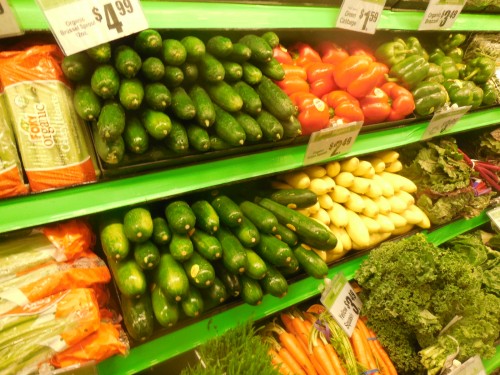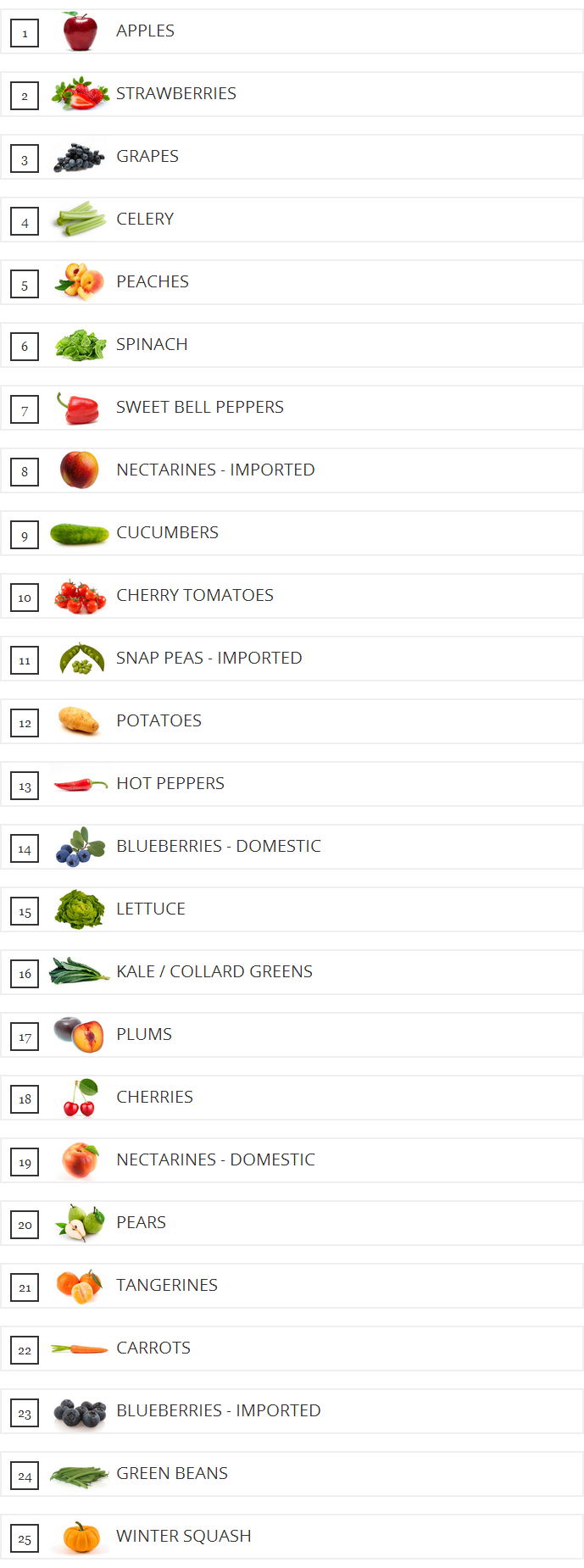
In making this decision, it can be extremely helpful to know what fruits and vegetables contain the most pesticides. If you know which produce contains more pesticides than others, you can make sure that you buy organic for those. Then you can opt to buy non-organic for those that have few pesticides in order to save money.
The Environmental Working Group recently released their 2014 list of produce that you’re likely to find covered in pesticides if you purchase it non-organic (full list). The list ranks the level of pesticides which remain on the produce after it has been washed or peeled, depending on how that produce is usually consumed. For example, the pesticide level would be measured on apples after they have been washed, but on oranges after they have been peeled, since this is how most people eat those fruits.
It should be noted that the list does have some flaws. The list only looks at the number of chemicals found on the produce, not the type of chemicals or level of each chemical. This information is critical in determining the actual hazard of the chemicals on the produce for you. It’s also important to note that almost all the produce contains levels of pesticides that are below what the Environmental Protection Agency (EPA) deems as being harmful for consumption. The Department of Agriculture states that produce sold in the US is safe to eat. Still, if you are looking to reduce the number of pesticides going into your body, this is a place to start when deciding what food to buy organic.
Below you’ll find a list of 25 fruits and vegetables that contain the highest levels of pesticides in 2014:

2. Strawberries
3. Grapes
4. Celery
5. Peaches
6. Spinach
7. Sweet Bell Peppers
8. Nectarines (imported)
9. Cucumbers
10. Cherry Tomatoes
11. Snap Peas (imported)
12. Potatoes
13. Hot Peppers
14. Blueberries (domestic)
15. Lettuce
16. Kale / Collard Greens
17. Plums
18. Cherries
19. Nectarines (domestic)
20. Pears
21. Tangerines
22. Carrots
23. Blueberries (imported)
24. Green Beans
25. Winter Squash
Along with the produce that contains the most pesticides, it’s also good to know what produce has the least amounts. Below are the 15 fruits and vegetables with the least amount of pesticides found on them:
1. Avocados
2. Sweetcorn
3. Pineapples
4. Cabbage
5. Sweet Peas (frozen)
6. Onions
7. Asparagus
8. Mangoes
9. Papaya
10. Kiwi
11. Eggplant
12. Grapefruit
13. Cantaloupe
14. Cauliflower
15. Sweet potatoes
With this information, those who are on a grocery budget that doesn’t allow for them to purchase organic produce all the time, they can make a concerted effort to put their hard-earned money toward organic produce in areas where it’s likely that the fruit and vegetables will contain pesticides. For example, if a person had to choose, it would be better to spend extra money on organic apples, strawberries, and grapes while opting for non-organic avocados and sweetcorn.
Jeffrey strain is a freelance author, his work has appeared at The Street.com and seekingalpha.com. In addition to having authored thousands of articles, Jeffrey is a former resident of Japan, former owner of Savingadvice.com and a professional digital nomad.
Comments